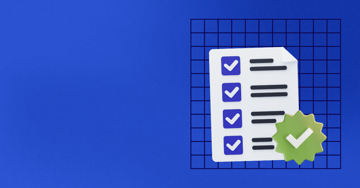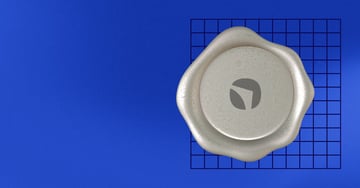How to Not Lose the Plot (or Your Listeners)
Share this
Let me pull back the curtain for a second.
Call me the podcast fairy godmother, minus the wand, plus a lot of editing notes. While you don’t hear my voice on the mic, I’m the one pulling strings behind the scenes of XYPN’s Behind the Advisor podcast. I’ve worked on more shows than I can count, from brand-new launches to multi-year podcasts that just needed a little glow-up.
And here’s what I’ve learned: podcasting isn’t just about pressing “record” and hoping someone listens. It’s a strategy. One that can grow your RIA if you treat it like a business asset, not a side hustle.
This isn’t your “how to start a podcast” blog. (We’ve already got that.) This is your guide to the dos and don’ts of making your podcast actually work for you, whether you're 3 episodes in or 300.
DO: Define the Purpose of Your Show
Your podcast is a tool.
- Define a goal: Brand awareness? Referral partnerships? Client nurturing? Lead gen? Pick one. Maybe two.
- Example: Benjamin Brandt’s Retirement Starts Today is designed specifically for retirees and near-retirees.
- If you’re just “talking about money stuff,” you’ll get lost in the noise. Purpose gives you focus.
Mini-prompt: Ask yourself: If my dream client found my podcast, would they feel like I made it for them?
DON’T: Let It Become a Vanity Project
Podcasting is a strategy.
- If you’re rambling for 45 minutes about your life philosophy, ask: Who is this serving?
- Shorter is often better: 20–30 min tight episodes beat hour-long rambles.
- Avoid “I just like to talk” syndrome.
- If you want to share personal stories, make sure they connect directly to your listener’s financial life or decision-making.
DO: Create for Your Audience, Not Other Advisors
Your peers are not your prospects.
- Many advisor podcasts are secretly made for other advisors (and that’s fine if that’s your goal).
- But if you're trying to reach clients, stop quoting Fed policy or talking shop.
- Talk like you’re at a dinner party with your ideal client. Would you pull out a chart?
Example: Taylor Schulte’s Stay Wealthy podcast breaks down topics like tax-loss harvesting in plain English.
DON’T: Rely on AI to Create the Whole Show
AI is great for transcripts and repurposing, not content strategy.
- Don’t ask ChatGPT to write your script from scratch. You’ll end up with a generic, lifeless episode.
- Use AI for: outlining, titling, pulling quotes, and repackaging into social posts.
But the heart of your content should be you: your voice, your stories, your POV.
DO: Batch, Schedule, and Promote Like It’s a Campaign
Consistency > creativity.
- Batch 3–4 episodes at a time to avoid burnout.
- Use tools like Captivate or Libsyn for scheduling. Promote every episode across your client comms, email list, blog, and LinkedIn.
- Repurpose into mini clips, reels, carousel posts, and every episode can become a week of content.
Pro tip: XYPN’s podcast Behind the Advisor doesn’t just publish episodes, it builds momentum around stories. Think campaigns, not just content drops.
DON’T: Get Stuck in “One-Format Syndrome”
Interview shows aren’t your only option.
- Consider solo episodes, Q&As, client case studies, and “react” episodes to news or myths.
- Rotate formats to keep things fresh and test engagement.
Example: Carl Richards’ Behavior Gap Radio uses micro-episodes (often 6–10 min) focused on one clear idea.
DO: Track Your ROI, But Set the Right Expectations
Growth takes time, but it should still be measurable.
- Use trackable URLs (like Bit.ly) for episode links.
- Podcasting is long-tail content. You may not get leads right away, but you should see:
- Higher client trust
- Shorter sales cycles
- More referrals
Pro-Tip: Ask on your intake form: “How did you hear about us?” If “podcast” starts popping up, bingo.
DON’T: Forget Compliance, But Don’t Let It Kill the Vibe
You can stay compliant and be interesting.
- Use disclaimers. Avoid promissory language. Keep it educational.
- But don’t let fear make you boring.
- Share insights, not guarantees. Tell stories, not forecasts.
- Work with your compliance team ahead of time to set up a repeatable review process.
DO: Name-Drop the Right People (and Podcasts)
Want your audience to trust you faster? Borrow trust.
- Recommend other shows. Reference thought leaders. Give shoutouts.
- This makes your show more community-driven and shows you’re plugged into the space.
- Some good ones to reference or recommend (from Kitces’ 2025 list):
- The Efficient Advisor by Libby Greiwe
- Rethink. Financial Advice by Adam Holt and Derek Notman
- BIF Bites by Gerald Mee and Adam Scherer
- Financial Advisor Success by Michael Kitces
- Behind The Advisor by Alan Moore (Of course :))
DON’T: Assume the Podcast Will Sell For You
Your podcast is the opener, not the closer.
- Listeners aren’t going to binge 20 episodes and then magically book a call.
- You need clear CTAs: “Download our guide,” “Join our newsletter,” “Book a 15-minute fit call.”
- Use your podcast to move people one step closer, not all the way to the close.
Podcasting Works, If You’re Willing to Work It
Podcasting is one of those rare marketing tools that is scalable, evergreen, personal, and educational.
I’ve seen advisors launch a show that changes the trajectory of their firm. I’ve also seen people ghost their podcast after six episodes and wonder why it didn’t “work.”
If you’re in this for the long haul, I’m rooting for you. Keep showing up, keep making episodes that serve your people, and keep treating your podcast like the high-leverage growth tool it can be.
And if you need inspo, we’ve got a little show called Behind the Advisor that might just spark your next idea. You know where to find us.

About the Author
Ryann Thomas is the Content Manager at XYPN, where she leads the creation and execution of strategic content initiatives designed to help financial advisors grow their firms through meaningful storytelling and digital marketing. With a strong foundation in rhetoric and composition, Ryann brings a research-driven approach to content development, helping XYPN's members connect with their ideal clients through clarity, creativity, and purpose. Before joining XYPN, Ryann consulted across a wide range of industries, delivering results-focused marketing strategies rooted in communication theory. Ryann holds a bachelor's degree in Rhetoric and Composition from Montana State University, where she developed her passion for using language as a tool for empowerment, persuasion, and change.
Share this
- Advisor Blog (719)
- Financial Advisors (242)
- Growing an RIA (128)
- Business Development (93)
- Digital Marketing (93)
- Marketing (90)
- Community (82)
- Start an RIA (76)
- Coaching (73)
- Running an RIA (72)
- Compliance (70)
- Client Acquisition (68)
- Technology (67)
- Entrepreneurship (64)
- XYPN LIVE (64)
- Fee-only advisor (49)
- Sales (49)
- Bookkeeping (46)
- Client Engagement (45)
- Practice Management (44)
- XYPN Books (43)
- Scaling an RIA (42)
- Investment Management (41)
- Client Services (31)
- Employee Engagement (31)
- Lifestyle, Family, & Personal Finance (31)
- Financial Education & Resources (29)
- Market Trends (24)
- Journey Makers (23)
- Process (18)
- Niche (12)
- SEO (9)
- Career Change (8)
- Partnership (8)
- Transitioning Your Business (7)
- Sapphire (6)
- Transitioning To Fee-Only (4)
- Emerald (3)
- Persona (3)
- Social Media (3)
- Transitioning Clients (3)
- RIA (2)
- Onboarding (1)
Subscribe by email
You May Also Like
These Related Stories

The Most Underrated Skill Financial Advisors Need to Grow with Intention
Jul 28, 2025
7 min read

Crafting Client Onboarding Content That Sets Expectations and Reduces Questions
Sep 8, 2025
3 min read






